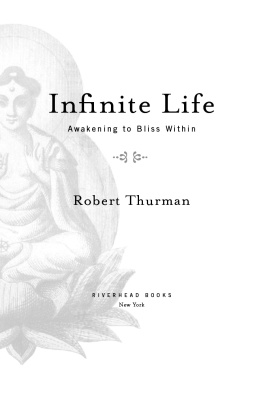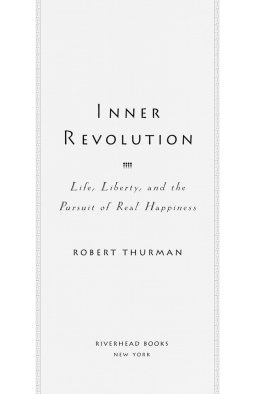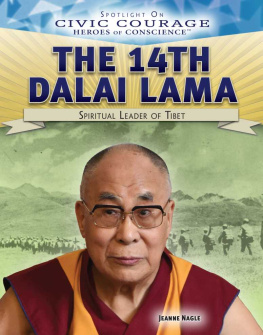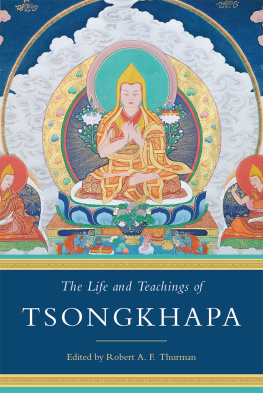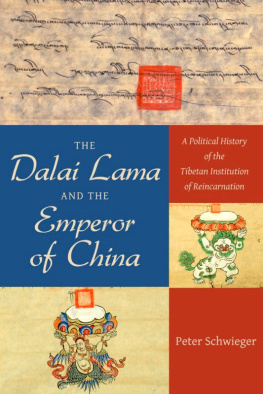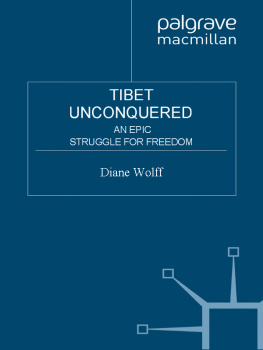All rights reserved, including the right to reproduce this book or portions thereof in any form whatsoever without the prior written permission of Atria Books/Beyond Words Publishing, Inc., except where permitted by law.
Managing editor: Lindsay S. Brown
Editor: Julie Steigerwaldt
Copyeditor: Ali McCart
Proofreader: Gretchen Stelter
Illustrations: Robert Beer
ATRIA BOOKS and colophon are trademarks of Simon & Schuster, Inc. Beyond Words Publishing is a division of Simon & Schuster, Inc.
Thurman, Robert A. F.
Why the Dalai Lama matters: his act of truth as the solution for China, Tibet, and the world / by Robert Thurman.
p. cm.
1. Bstan-dzin-rgya-mtsho, Dalai Lama XIV, 1935 2. BuddhismChinaTibet. 3. Central-local government relationsChinaTibet. 4. Tibet (China)HistoryAutonomy and independence movements. I. Title.
D EDICATION
T o the brave people of Tibet (Bd Kawajen) and their leader, His Holiness the Great Fourteenth Dalai LamaI dedicate this humble effort to help their heroic efforts for their own freedom, for the freedom of their neighbors in four directions, in China, India, the Turkestans, and the Mongolias, and for the peace of our world. May the truth prevail!

C ONTENTS
PART I
W HO I S THE D ALAI L AMA AND W HY I S H E THE K EY?
PART II
T HE S OLUTION FOR C HINA AND T IBET
PART III
T IBET S OLVED , F REED , R ESTORED
A CKNOWLEDGMENTS
T here are many who have helped me with this fated book, but none have been more helpful than my old friend Barbara Dills with her Lakota determination and sense of justice, and her hi-tech communication insights. For inspiration, I thank Marc and Lynne Benioff, Joost Elffers, Fred Doner, and Roland Comtois. Cynthia Black and Richard Cohn of Beyond Words caught the vision and made it happen. They deserve my most heartfelt thanks. I also deeply thank Judith Curr for her clear and decisive support; Lindsay Brown and Sara Blum for their patient perseverance and creativity; Annie Bien, William Meyers, Leslie Kriesel, Julie Steigerwaldt, Marie Hix, and Ali McCart for their skillful and perspicacious editorial help; Tsering Wangyal Shawa, the Norbulingka Institute, Steve Marshall and Suzette Cooke for their creation of the all-important maps that tell the story; William Bushell, Ph.D., for his research into high-altitude physiology and genetics; Suzanne van Drunick, Ph.D., Tingjun Zhang, Ph.D., and Oliver Frauenfeld, Ph.D., from the Cooperative Institute for Research in Environment Sciences (CIRES) at the University of Colorado, for research on climate change on the Tibetan Plateau; and among photographers who love Tibet, the late and much lamented Galen Rowell as well as Steve McCurry, Sonam Zoksang, Nina Schroeder, Don Farber, Joseph Gottwald, Martin Gray, and Rajiv Mehrotra. I am grateful to the Office of His Holiness the Dalai Lama in Dharamsala, to the helpful staff members of the Office of Information of the Tibetan Government in Exile, to the Tibet Environmental Watch website, to the Norbulingka Institute in Dharamsala, and to the staff of Tibet House US in New York. Finally, I live in constant gratitude to my wife, Nena, and all my children, grandchildren, and my great-granddaughter.
I NTRODUCTION
E veryone tends to like the Dalai Lama, even when they dont think they will. The question is, Why? Traveling the world as an author and professor, and talking with all kinds of people, I have seen the way individuals everywhere have embraced His Holiness the Dalai Lama and almost universally granted him a huge degree of moral authority. In an era marked by a pervasive sense of hopelessness and discouragement about the state of thingsdespite all our advances in science and cultureit is a humble Buddhist monk from the remote highlands of Tibet who inspires optimism for the future.
I have witnessed this strange phenomenon time and again over the years whenever the Dalai Lama appears in public, as well as in private meetings with noted scientists, dignitaries, and heads-of-state. Even secular materialists flock to the wisdom of this man, recognized by his own followers to be the incarnation of a divine being. People of every background and faith perk up when they recall his presence, impact, and meaning. And they feel a huge weight lifted from them when they meet him or hear his teachings. It certainly isnt because of his Buddhist practice, since many who admire him are nonbelievers or followers of other religions. The Dalai Lama is a dynamic person, but he is neither theatrical nor glamorous. Hes also been called a dreamer, an idealist, and unrealistic in his prescriptions for world peace, nonviolence, demilitarization, and happiness through sharing and justice.
People like him so much because, despite the state of our world and the ongoing oppression of his people, the Dalai Lama sees that all is possibleeven the good, the true, and the beautiful. And yet, despite his extraordinary popularity in all corners and his repeated and sincere attempts at reconciliation with the Chinese leadership, he remains living in exile after half a century of repressive Chinese rule in Tibet. And again we must ask, Why?
This book is a response to the questions above, offering many more reasons why people like himand why our admiration should be even greater. It also describes what the Dalai Lama could accomplish for China, Tibet, and the world if he were allowed to do so. Should people choose to follow his practical advice about ethics and society, astonishing benefits await. I outline simple, practical steps that the leadership of China could take, showing how easily they could cease making an enemy of a good friend and accept him as a key ally in winning the goodwill and cooperation of the Tibetan people. And I suggest what specific benefits he could confer upon them, as they work together toward a positive future for China and Tibet, giving to both sides what they really need.
I provide here a vision of what things would look like if his country were restored to his people and himself, and if they were allowed to freely manage it as an autonomous region within China, for the benefit of China and the entire world. My claims are grounded by the Dalai Lamas own words. His speeches from various solemn settings can seem so simple and direct that people tend not to fully appreciate their weight. Elucidating them here will help to underscore their profound implications in ways that he is too humble to do himself.
The Dalai Lamas wish and vision for humanity are absolutely right and reliable, realistic and not far-fetched, helpful and not harmful. And he has been living his act of truth for the last sixty years, as youll see throughout this book. I present to you his exemplary act of truth and the implications of his wise words as the key to solving the problem of China and Tibet and, indeed, flowing away from the planetary crisis into which we are plunging headlong.



